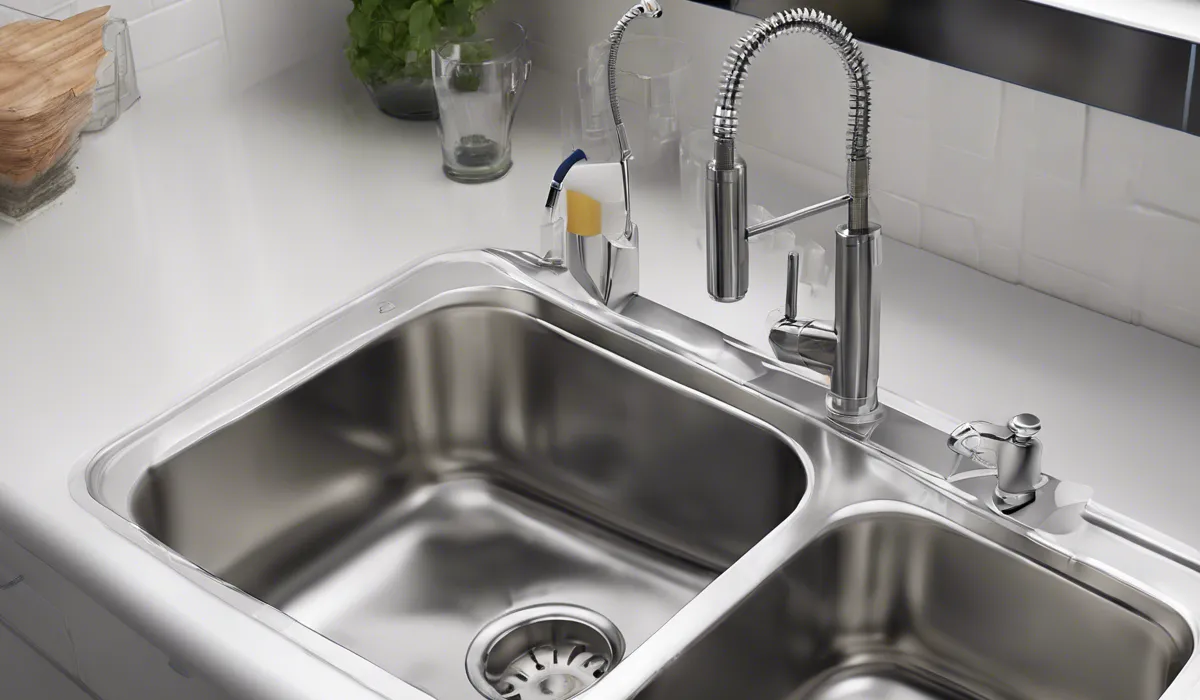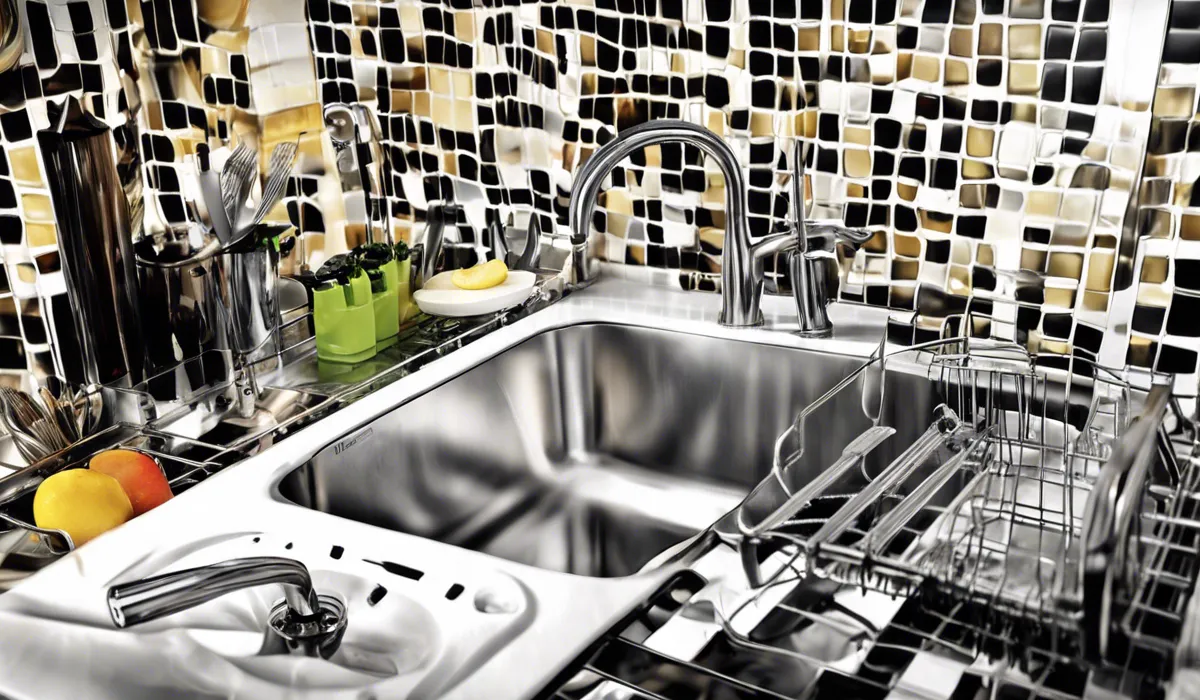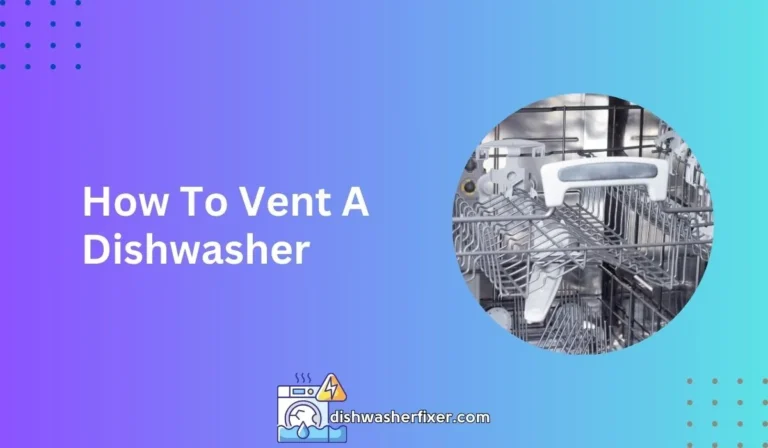Why Does Dishwasher Drain Into Sink? Plumbing Secrets Revealed!
Dishwashers drain into sinks to utilize the sink’s P-trap, which prevents sewer gases from entering the home. This connection also makes installation easier and helps avoid additional plumbing. The sink acts as a direct route for wastewater, ensuring efficient disposal.
Plumbing Connection Design

Understanding Kitchen Plumbing Basics
A typical kitchen plumbing system includes a network of pipes that supply fresh water and drain away wastewater. Fresh water lines bring in clean water for consumption and use in appliances.
The drainage system, on the other hand, is designed to carry away dirty water. A crucial component of this system is the P-trap, a curved pipe section located beneath the sink that holds water and prevents sewer gases from entering the home.
Dishwasher’s Route to the Sink
The dishwasher connects to this intricate system by draining into the sink. This connection is not by chance but by design.
The sink provides a convenient and effective pathway for the dishwasher’s wastewater to join the home’s sewage system.
Utilizing the sink’s drain saves on additional plumbing and takes advantage of the existing water trap.
Integrating the Garbage Disposal
Many kitchens have a garbage disposal installed within the sink’s drain. When present, the dishwasher drain hose often connects to the garbage disposal.
This setup allows food particles from the dishwasher to be ground up and flushed away, reducing the risk of clogs in the plumbing system.
The Sink’s Drain: A Conduit for Dishwasher Wastewater
The sink’s drain serves as a direct route for the dishwasher’s wastewater. By channeling the water through the sink’s drain, it ensures that wastewater is disposed of efficiently and travels through the necessary plumbing components to maintain a clean and safe kitchen environment.
Water Safety and Hygiene

Blocking Backflow of Contaminated Water
To prevent the backflow of contaminated water into the dishwasher, it is imperative to have an appropriate drainage system.
Backflow can pose a significant health risk, as it can lead to the contamination of clean dishes with dirty water or, worse, sewage.
High Loop and Air Gap Essentials
The high loop or air gap is a critical component in maintaining kitchen hygiene. These methods elevate the dishwasher drain hose above the sink’s flood level, ensuring that dirty water does not siphon back into the dishwasher.
This physical separation between the sink and the dishwasher is a simple yet effective way to keep the water in your kitchen safe.
Compliance with Building Codes
Building codes and legal requirements are in place to ensure that all plumbing installations, including dishwashers, adhere to safety and hygiene standards.
These regulations mandate specifics such as the installation of a high loop or air gap to prevent backflow and protect the health of the home’s occupants.
Importance of Proper Installation
Proper installation of the dishwasher’s drainage system is not just a good practice; it is often a legal requirement. Following these guidelines ensures that the dishwasher operates safely and maintains a hygienic kitchen environment.
Practicality and Efficiency

Simplifying Installation and Maintenance
The current design of having the dishwasher drain into the sink simplifies the installation process.
This setup minimizes the need for additional piping and reduces complexity, making it easier for homeowners and plumbers alike to install and maintain the system.
Cost-Effectiveness of the Sink Connection
Connecting the dishwasher drain to the sink is not only convenient but also cost-effective.
It eliminates the need for extra materials and labor that would be required to create a separate drain for the dishwasher, resulting in savings for the homeowner.
Addressing Dishwasher Drainage Issues
Although the design is efficient, issues can arise with a dishwasher draining into the sink.
Clogs or improper installation can lead to water backing up into the sink or dishwasher. Regular maintenance and being attentive to the performance of your dishwasher and sink can help identify and resolve these problems quickly.
Ensuring Smooth Operation
Ensuring that the dishwasher and sink drains are clear of obstructions is key to a smoothly operating kitchen.
Regular checks and cleaning can prevent blockages that might disrupt the flow of wastewater, keeping your dishwasher and sink in top condition.
FAQs About Why Dishwashers Drain Into Sinks
Why does my dishwasher drain through the sink?
The dishwasher drains through the sink to use the sink’s P-trap, which blocks sewer gases from entering your home and allows for simpler installation without additional plumbing.
How does a sink’s P-trap benefit the dishwasher?
A sink’s P-trap prevents sewer gases from coming back up the drain line and into the home, which is beneficial for dishwashers connected to the sink drain.
Is it necessary for a dishwasher to be connected to the sink for drainage?
While not the only method, connecting a dishwasher to the sink is a common practice for efficient wastewater disposal and avoids the need for separate plumbing fixtures.
Can installing a dishwasher be easier by draining into the sink?
Yes, draining a dishwasher into the sink simplifies installation by using the existing sink plumbing, which is already equipped to handle wastewater.
Does the sink connection affect the dishwasher’s performance?
No, the sink connection does not negatively affect the dishwasher’s performance; it ensures efficient waste disposal without additional plumbing complexity.
Final Thoughts
Dishwashers are designed to drain into sinks to take advantage of existing plumbing, specifically the sink’s P-trap, which blocks sewer gases.
This setup simplifies installation, negates the need for additional plumbing, and provides a quick and effective way to dispose of wastewater, leveraging the sink as an established pathway.





